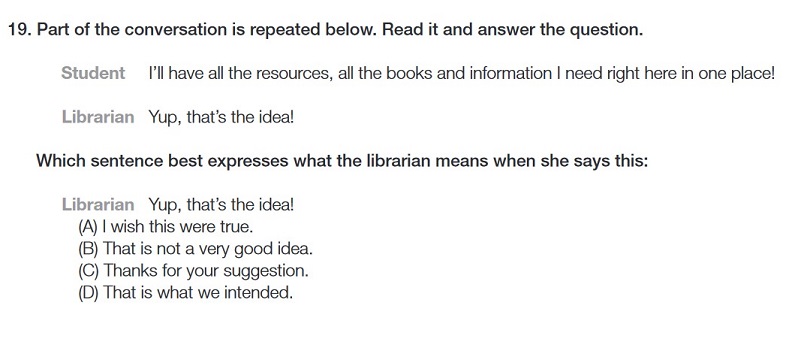At first glance, TOEFL Listening may seem like an easy section: all you have to do is pay attention to some short conversations and answer a few questions on them. Should be easy for anyone who has watched a movie or listened to music in English, right? As a matter of fact, the TOEFL Listening section is often challenging because it requires test takers to remember facts and information from several-minute long recordings and then answer questions on specific information mentioned in the recording.
To really ace the TOEFL Listening test, you need to know exactly what types of questions you’ll be seeing, how you should be studying, and how to take great notes on test day. We cover all those topics and more helpful TOEFL Listening tips in this guide.
TOEFL Listening Section Overview
Listening is the second of four sections on the TOEFL. The entire section lasts 60 to 90 minutes and includes four to six lectures and two to three conversations. Each lecture lasts about three to five minutes and is followed by six questions, and each conversation lasts about three minutes and is followed by five questions.
The variation in time and length is due to the fact that some test takers will have un-scored experimental questions in their TOEFL Listening section, making it extra long, while others will have experimental questions during their Reading instead. You won’t know which questions are experimental and which are graded, so try not to worry about it too much.
The lectures and conversations will be similar to those you’ll likely hear as a student. Theymay be a conversation between a student and teacher, a class discussion, a lecture by a professor, or a similar scenario. There will be pictures on the computer screen to give you an idea of how many people will be speaking and what the setting will be.
For some questions clips of the conversation or lecture will be replayed, but other than that, you’ll only hear the audio clip once. You don’t have the option to replay it. This section tests your ability to understand spoken English, listen for pragmatic understanding, and connect and synthesize information.
What Types of Questions Are There on TOEFL Listening?
You will come across three types of questions as you complete the TOEFL Listening test. Since it’s important to know what to expect, in this section we explain the different types of question and, for each question type, give a sample question and tips to help you answer those types of questions.
Standard Multiple Choice
You likely have a lot of experience with these types of questions. For each question there are four answer choices, only one of which is correct. You’ll need to choose the correct one. This is the most common question type you’ll see in TOEFL Listening.
Sample Question

Tips for Answering
- Read every answer choice. This may seem like obvious advice, but on the day of the test it’s easy to see an option that looks pretty good, choose it, and move along to the next question without checking to make sure there isn’t a better option. ETS will try to make some answer choices sound like the right answer, when they’re actually not. Reading through all your options will help you avoid getting fooled.
- Take notes while listening to the audio recording (how to do this is discussed in more detail below). Make them short and clear so you can easily review them when answering questions. They’ll often help you remember points you may have forgotten and that will help you answer questions correctly.
Multiple-Answer Questions
These questions are like the standard multiple-choice questions except they can have more than one correct answer. You’ll need to get all the answer options correct in order to receive credit for these questions.
Sample Question

Tips for Answering
- Questions with more than one answer will also be labeled as such, and you’ll also be told how many correct answers there are, so be sure to pay close attention when answering these questions so you don’t miss important information.
- For these questions especially, make sure you read through each answer choice to be sure you don’t miss a correct answer. You don’t get partial credit for these questions, so you’ll need to select every correct answer choice in order to get the question right.
“Replay” Questions
For these questions, you’ll hear a short part of the clip played again, and you’ll then be asked a question on that specific portion of the clip. They then follow the format of standard multiple-choice questions. This is the only time on the Listening section where you’ll get to listen to part of the audio recording again.
Sample Question

Tips for Answering
- Even if you took good notes during while listening to the complete audio recording, play close attention when the short clip is replayed. You’ll often be asked about a specific detail from the clip that you wouldn’t remember just by looking at your notes.
- Focus primarily on the clip that was replayed as opposed to what was said in the rest of the recording. For almost all these types of questions, you’ll be able to choose the correct answer based just on the clip, so you don’t need to worry about remembering what happened in the rest of the recording.






Marhaban Ya Ramadhan
BalasHapusmau freechip dari Donaco Poker????
Hubungi Kami Secepatnya Di :
WHATSAPP : +6281333555662
Sabung ayam dengan bonus WIN STREAK 7-9X
BalasHapusKenapa Tidak???
Ada kok di MUSEUM AYAM
Info hub
WA: 0822 6793 2581